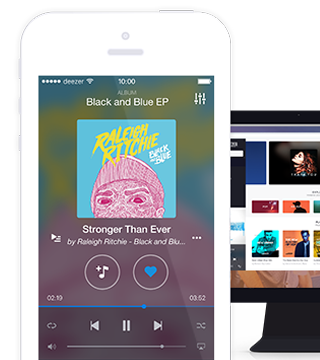

DEEZER PRICE CRACK
In the quarter before, Sony Music’s streaming jumped 15.49% QoQ to crack ¥139.11 billion or A$1.62 billion.Īlso in Q2, Warner Music Group’s streaming revenue fell by A$12.5 million YoY to $1.2 billion.Deezer's Premium plan allows users to enjoy CD quality 16-bit 44.1kHz tracks in FLAC format. Last week, Universal Music Group revealed in its Q3 2022 figures that in the three months to end of September, it generated €991 million or A$1.53 billion, from streaming subscription. Major labels would certainly be looking closely at subscription figures. “The number of new music subscribers dropped to below 1% of the population in (Great Britain) in Q1 of 2022, with the US and Germany also seeing a drop in new subscribers compared to the last year,” it reported.

Kantar put churn rates in 2022 at 5.1% for Germany, 4.6% for the U.S. Kantar showed that in Australia 42.6% of new subscribers in Q1 2022 went to Spotify, then Amazon Prime Unlimited (13.3%), YouTube Music (13.1%), and Apple Music (11.3%) with “others” at 4.3%. Indications are that most price sensitive are new subscribers. The drop rate was higher for students, from 67% to 59%. “Ultimately, streaming services may have room to increase subscription prices, and essentially their overall revenue, without a high loss of consumers.”īut data agency Kantar noted that in the U.K., subscription cancellations were dropping faster in the under-35 age group, from 57% to 53.5% YoY. Generally, the price threshold is thought to be U.S.$20.00 among all age groups, said the Arts Management & Technology Laboratory which suggested, “It indicates that users put a high value on music streaming, and therefore are willing to pay more. Studies show that a user who spent a lot of time and effort personalising their service will be reluctant to switch, even if costs surge.įeatures such as audio quality and the business model are more reasons to stay than recommendations, searches and social sharing. “When our competitors are increasing their prices, that’s really good for us because, again, with our deep engagement that we have and the lowest churn of any competitor, we will likely fare better,” he added.ĭeparting a music streaming service is apparently more complicated.

Similarly, Spotify CEO Daniel Ek noted that despite 46 price increases in markets globally, the results were “as good as we would have hoped for, if not better, in many of these places.” in October 2021, and to $10.99 in February in the U.S. and Germany in October and in Brazil in December.īut its rivals’ decisions “makes us more competitive,” its CEO Jeronimo Folgueira told investors last week, and “opens the door for further price increases down the line.”įolgueira isn’t fussed about price climbs: subscribers remain at 9.4 million in Q3 despite its Premium plan going from £9.99 (AU$17.99) to £11.99 ($21.49) in the U.K. YouTube Premium’s Family Plan climbed up by 28%, or by $5, to $22.99.įrance’s Deezer was already upping prices in the U.S. They gave two primary reasons for the churn, industry talk for cancellations: 40% because of the rising cost of a Netflix subscription, and 20% because of the rising costs of everyday items.Īpple Music’s global rise, attributed to “an increase in licensing costs,” saw an individual sub already go by $1 to $10.99 per month in the U.S., and the Family plan by $2 to $16.99. survey found that 25% of respondents plan to leave by the end of 2022. After Netflix this year instituted its sixth rate hike in eight years, a U.S.


 0 kommentar(er)
0 kommentar(er)
